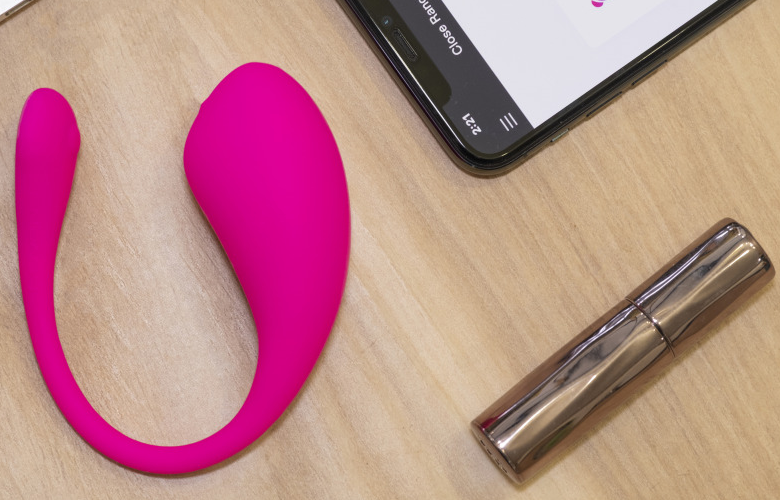Silicone sex toys are one of the best options when it comes to body-safe pleasure. They’re non-toxic, easy to clean, and built to last—making them a top choice for many.
But if you’ve ever been curious about going beyond package labels, let’s break it down. We’ll cover what makes silicone so great, how it’s made, and why it’s the go-to choice for people looking for both safety and fun. Once you learn about all the benefits, you’ll see why silicone is the way to go.
What's In This Article?
 What Are “Silicone” Sex Toys Made Of?
What Are “Silicone” Sex Toys Made Of?
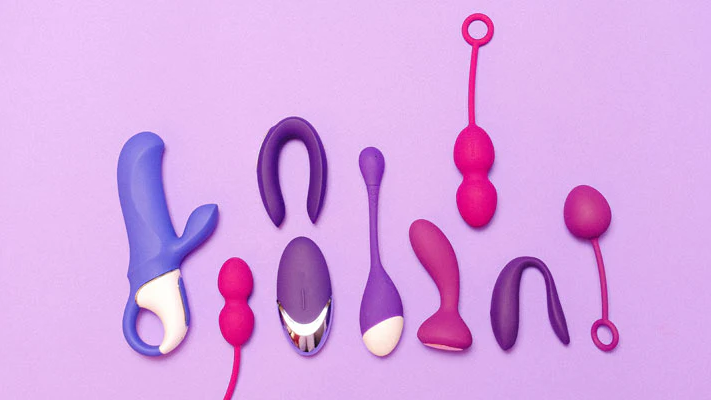
Silicone sex toys are made from a flexible material called silicone rubber. It’s created by combining silicon (the stuff in sand) with oxygen, carbon, and hydrogen. This makes silicone a soft yet durable material that can be molded into all kinds of shapes, from firm toys to squishy ones.
The silicone used in sex toys is usually medical-grade or platinum-cured, which means it’s been tested to make sure it’s safe for the body.
In fact, silicone is used in a lot of everyday products. It’s in things like kitchen utensils, bottle nipples, and cookware. Silicone is also used for bathroom seals, electronics, and medical devices like implants or even bandages. Basically, it’s a super versatile material that can handle heat, stay flexible, and resist wear over time!
 Why Silicone Sex Toys Are Popular
Why Silicone Sex Toys Are Popular

Silicone sex toys are super popular, and for good reason. They’re not only safe, but they’re also easy to care for and built to last. Here’s why people love them:
- Body-safe: Silicone is non-toxic and free from harmful chemicals, making it perfect for sensitive skin or allergies.
- Easy to clean: Since it’s non-porous, a quick wash with soap and warm water is all you need, and some silicone toys can even be boiled for extra cleanliness.
- Durable: Silicone toys are tough and last much longer than other materials—no cracking, fading, or losing shape over time.
- Hygienic: With no tiny holes to trap bacteria or fluids, silicone keeps things clean and safe.
- Long-lasting investment: They may cost a little more upfront, but silicone toys are built to last, saving you money in the long run.
 How Silicone is Made: The Science Behind the Magic
How Silicone is Made: The Science Behind the Magic
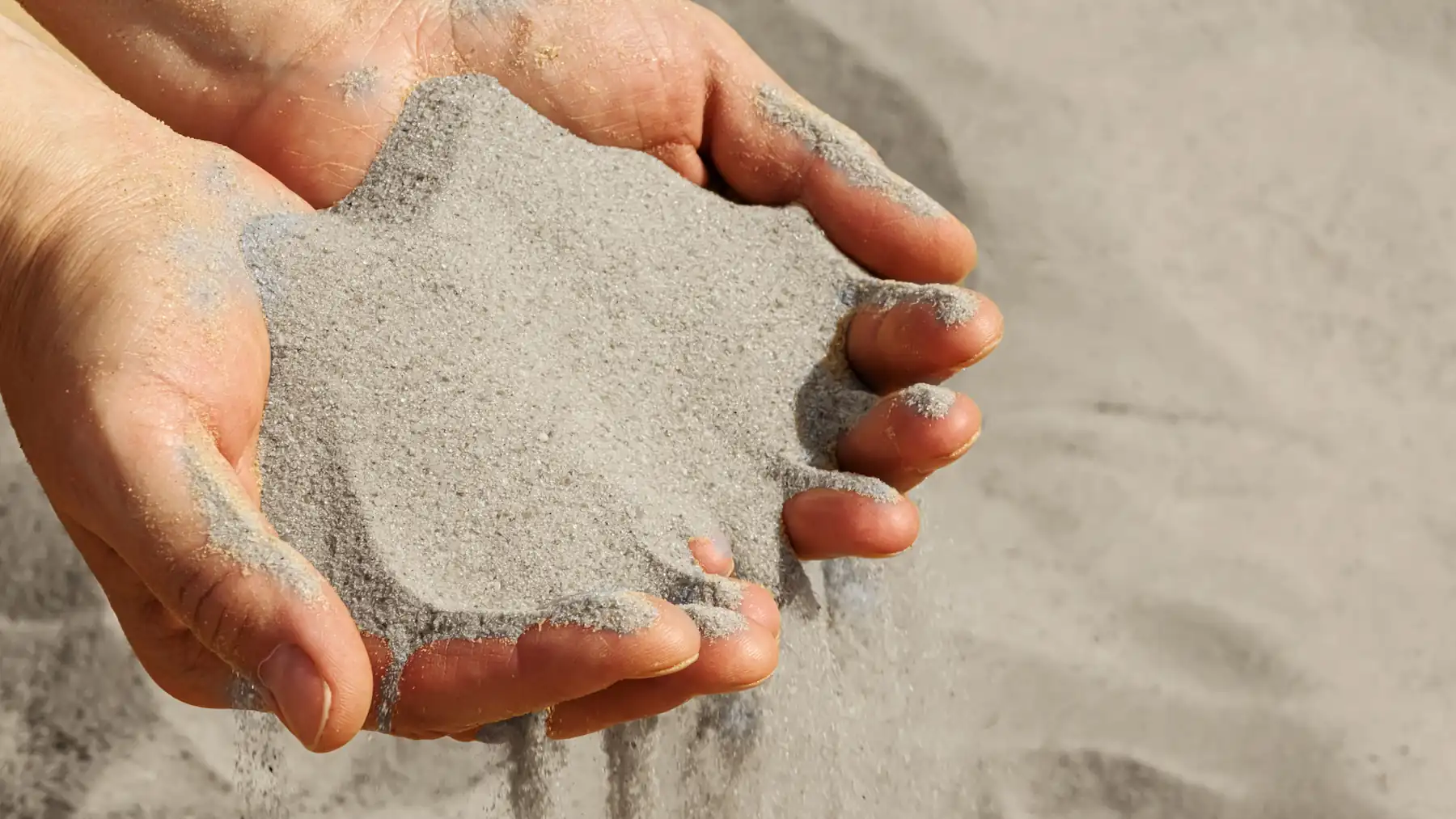
Have you ever wondered how silicone turns into the soft, stretchy material used in sex toys? It’s actually a pretty cool process, and it all starts with a few simple ingredients.
 It starts with sand:
It starts with sand:
The main ingredient in silicone is silicon, which is found in sand, rocks, and even plants. Silicon, by itself, doesn’t do much, but when it’s mixed with oxygen, carbon, and hydrogen, it turns into silicone—the stretchy, durable material that’s used in toys, kitchen tools, and even medical devices.
 Mixing it all together:
Mixing it all together:
After silicon is extracted from sand, it’s combined with other elements and heated up to create a liquid form of silicone. This liquid can then be shaped into whatever is needed—whether that’s a kitchen spatula or a sex toy.
 Making it stretchy:
Making it stretchy:
Now here’s the fun part. Silicone becomes stretchy because of how its molecules are linked together. The molecules form long chains, kind of like a chain of people holding hands. These chains give silicone the ability to bend and stretch without breaking. The longer and stronger the chains, the more flexible and durable the silicone becomes. That’s why silicone sex toys can be soft and bendable but still tough enough to last.
 Curing the silicone:
Curing the silicone:
- Once the silicone is shaped and the long chains are formed, it needs to be cured. Think of this like baking dough to turn it into a solid, finished product.
- A special process called platinum curing is used to cure high-quality silicone. A platinum catalyst (a special chemical) is added to help bond the silicone molecules together tightly, making the silicone stronger, safer, and more durable.
- This curing process also makes sure the silicone stays non-toxic, hypoallergenic, and non-porous—which is important for keeping everything clean and safe when you’re using it.
So, after all these steps, silicone becomes the flexible, strong, and safe material we use in sex toys. Thanks to the way it’s made, silicone stays smooth, durable, and easy to clean, making it the perfect choice for toys you can rely on for a long time.
 The Environmental Impact of Silicone Sex Toys
The Environmental Impact of Silicone Sex Toys

When it comes to choosing a sex toy, the material isn’t just about how it feels or functions—there’s also the environment to consider. Silicone, while not biodegradable, does have some eco-friendly benefits that make it a better choice than other materials. Here’s why:
- Durability: Silicone sex toys are made to last. While plastic toys might crack or break after just a few uses, silicone toys can hold up for years if taken care of properly. This means fewer toys end up in the landfill over time, which is better for the planet.
- Long lifespan: Since silicone is tough and can withstand high temperatures, wear, and frequent use, it outlasts many other materials. So, instead of buying cheap, disposable toys that break easily, investing in a silicone toy is a way to reduce waste and make a more sustainable choice.
- Minimal waste during production: Silicone is made from natural resources, and its production process doesn’t create as much waste as other plastics or synthetic materials. It’s not perfect, but when you compare it to things like PVC or TPE, silicone is often a cleaner choice in terms of production.
- Recyclable: While silicone isn’t biodegradable, it is recyclable. That means when you’re done with your toy, it can be broken down and reused in other ways. So, if you’re looking for a material that’s not just good for you but also a bit kinder to the environment, silicone is a great option.
In short, silicone isn’t perfect, but when you compare it to other materials used in sex toys, it’s a pretty solid, long-lasting, and eco-friendly choice. By choosing silicone, you’re getting a durable product that will stand the test of time and help reduce waste.
 How to Clean Silicone Sex Toys the Right Way
How to Clean Silicone Sex Toys the Right Way
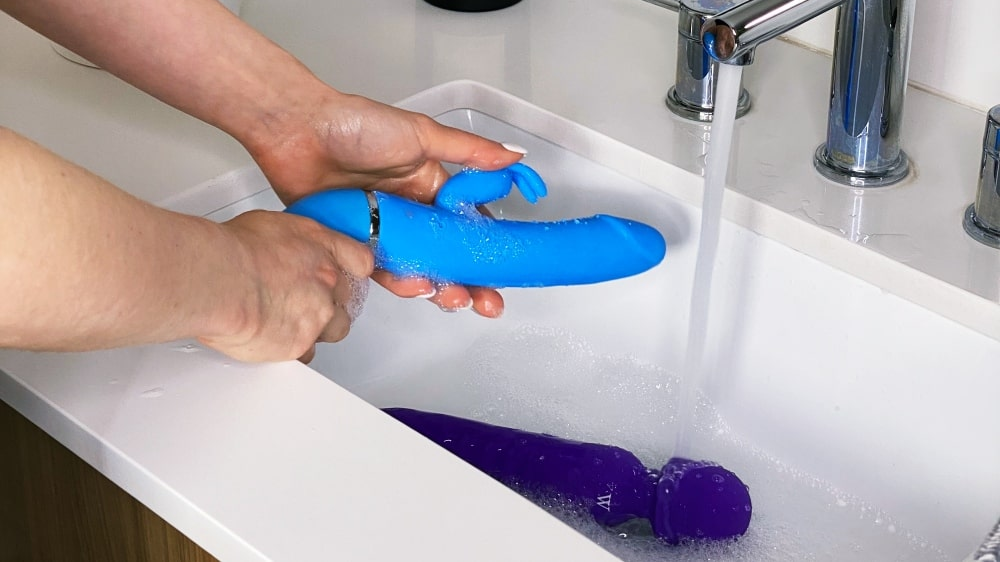
Cleaning your silicone sex toys is super important, and luckily, it’s pretty easy to do! Since silicone is non-porous (meaning it doesn’t have tiny holes for bacteria or fluids to get trapped in), cleaning it is a breeze. Here’s how to keep your toys fresh and safe to use:
- Simple soap and water: Use warm water and mild soap. Just wash them like you would your hands—make sure to get all the nooks and crannies. Once you’re done, rinse thoroughly to remove any soap, and dry them off with a clean towel or let them air dry.
- Boiling for a deep clean: If you want to be extra sure your toy is completely clean and sterilized, you can boil it! Just place the silicone toy in a pot of boiling water for 3-5 minutes. This is a great way to get rid of any leftover germs, especially if you’re using the toy for something more intense like anal play.
- Toy cleaners: There are special toy cleaners out there that are designed to clean sex toys safely. These cleaners are usually gentle and made to not damage the silicone.
- Drying: After you’ve cleaned your silicone toy, make sure it’s completely dry before you store it. Simply wipe it down with a clean towel or let it air dry for a few minutes.
Remember, the cleaner you keep your silicone toys, the longer they’ll last and the safer they’ll be to use. So, take a minute after each use to clean them properly, and you’ll be good to go for a long time!
 Useful FAQs
Useful FAQs
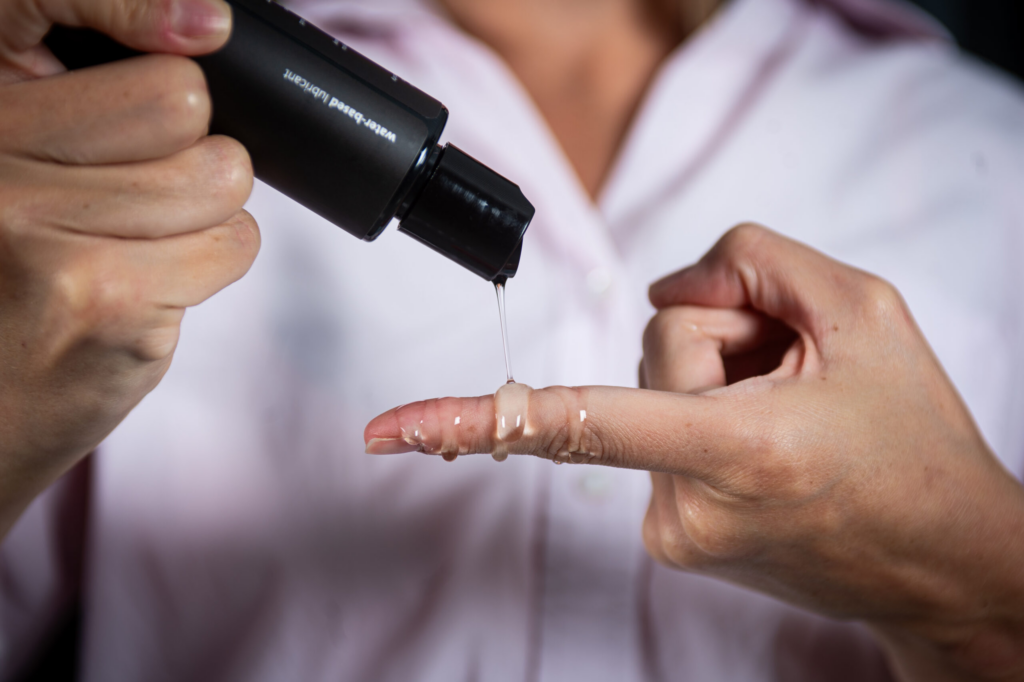
 How long do silicone sex toys last?
How long do silicone sex toys last?
Silicone sex toys are incredibly durable. With proper care, they can last for years. Unlike cheaper materials that break down or wear out over time, silicone holds its shape and strength, making it a long-lasting investment.
 Can silicone sex toys be used with lubricants?
Can silicone sex toys be used with lubricants?
Yes! Silicone sex toys work best with water-based lubricants. These lubes won’t damage the silicone material and are easy to clean off. Avoid using oil-based or silicone-based lubricants as they can break down the material over time.
 Why are some more expensive than other types?
Why are some more expensive than other types?
Silicone sex toys can be pricier because of the quality of the material. They’re non-toxic, hypoallergenic, and durable. The process of creating high-quality silicone, like platinum curing, adds to the cost, but it ensures that the toy will last longer, be safer to use, and stay in great condition.
 What’s the difference between medical-grade silicone and regular silicone?
What’s the difference between medical-grade silicone and regular silicone?
Medical-grade silicone is a higher-quality type of silicone that has been tested and approved for use in medical devices. It’s more refined, meaning it’s safer, hypoallergenic, and free from harmful chemicals. Regular silicone might not meet these strict standards, which is why medical-grade silicone is often preferred for sex toys.
 Are all silicone adult toys the same?
Are all silicone adult toys the same?
No, not all silicone sex toys are the same. Silicone toys come in different textures, firmness levels, and designs. Some are soft and squishy, while others are firmer for a more intense experience. The quality of the silicone can also vary.
 Can silicone cause irritation?
Can silicone cause irritation?
Silicone sex toys are generally hypoallergenic and safe for sensitive skin. However, some people may still experience irritation if they have an allergy or sensitivity to the material. Always make sure your toy is made from high-quality, medical-grade silicone to minimize any risk.
 What is the best way to store silicone adult toys?
What is the best way to store silicone adult toys?
To keep your silicone sex toys in great condition, store them in a clean, dry place away from direct sunlight and heat. Avoid storing them with other toys made from materials that could damage the silicone. You can also use a cloth bag or toy box to keep them safe from dust and dirt.
 Can they be used for anal play?
Can they be used for anal play?
Yes, they are a great option for anal play, especially if they have a flared base or wide handle to prevent them from getting lost. Make sure to use a water-based lubricant to ensure smooth and comfortable use.
 Do these sex toys have any odor?
Do these sex toys have any odor?
High-quality silicone sex toys should have little to no odor. If your toy has a strong smell, it might not be made from high-quality silicone or could be poorly manufactured. Clean your toy thoroughly, and if the smell doesn’t go away, it’s best to avoid using it.
 What are the common misconceptions about silicone sex toys?
What are the common misconceptions about silicone sex toys?
- “Silicone is too rigid”: This is not true! Silicone can be made soft, squishy, or firm depending on the design. You can find a texture that works for you.
- “Silicone is too expensive”: While silicone toys can be more expensive upfront, they’re worth the investment. They last longer, are safer to use, and perform better than cheaper materials.
- “Silicone is bad for the environment”: Silicone isn’t biodegradable, but it’s more durable than other materials. A longer lifespan means fewer toys need to be replaced, making it more eco-friendly in the long run.
 Final Thoughts
Final Thoughts
Silicone sex toys are a great choice if you’re looking for something safe, durable, and easy to maintain. With their body-safe qualities, long-lasting design, and variety of textures, silicone toys give you both comfort and reliability. Whether you’re new to the world of sex toys or you’re a pro, silicone is a solid option that checks all the boxes.
Now that you know more about silicone, its benefits, and how to take care of your toys, you’re all set to make a choice that works best for you. Quality materials really do make a difference in your experience, and silicone is one of the top choices for a reason.
Ready to explore? Check out our collection of Lovesen silicone sex toyses and find your perfect match!

Want More Useful Articles?
- Sex Toys 101 – A Positive and Detailed Beginner’s Guide
- Anal Toys – A Huge Guide to Everything You Stick Up Your Bum
- How to Save Money on Sex Toys and Other Adult Products

